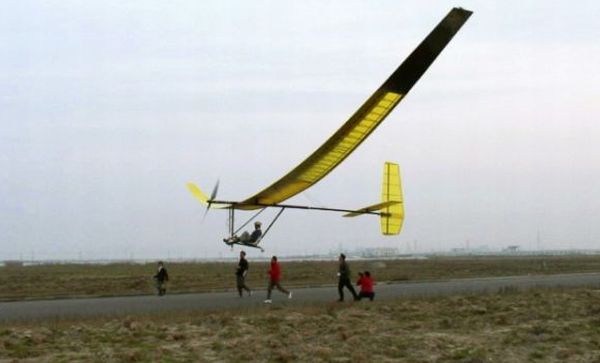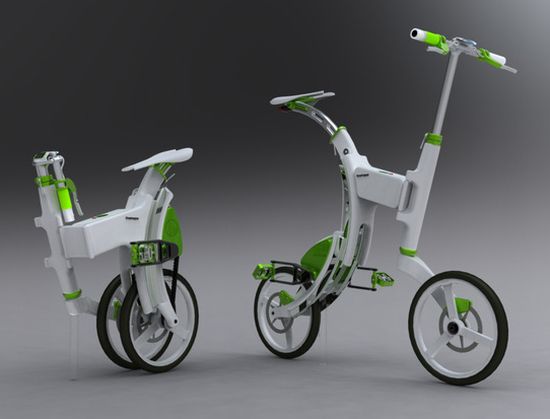A human-powered aircraft (HPA) by definition is an aircraft powered by direct human energy and the force of gravity, where the thrust provided by the human may be the only source of power. Novel and sylvan at the same time (Nazcas anyone?), such aircraft are mainly designed to test engineering capabilities, rather than recreation and transportation. But saying this, such conceptions are as environmentally friendly as it can get, simply because of the utilization of ‘clean’ human power along with certain magnitudes and direction of wind currents prevalent in the atmosphere. So, without further ado, let us check out the 10 innovative yet sustainable (to its core) prototype flying contraptions.
Snowbird:

Aptly named as the Snowbird, this HPA contrived by a team from the University of Toronto – Institute for Aerospace Studies, actually has wings that flap. The innovative use of various wing flaps that affect flight dynamics is crucial in the development of prototype aircraft aiming to harness human power for achieving zero-emission flights. It is a high lift device. Being the first of its kind, the contraption was tested to remain in flight for 19.3 seconds, and covered a distance of 145m at an average speed of 25.6kph. Quite remarkably, the craft only weighs at 94 lbs (approx 42.7kg), but has a whopping wingspan of 32 meters (105 feet). And as an interesting side-note, even the pilot had to lose 18 lbs of his own body-weight, to fly this zero emission aircraft.
Windows Project Phoenix glider:
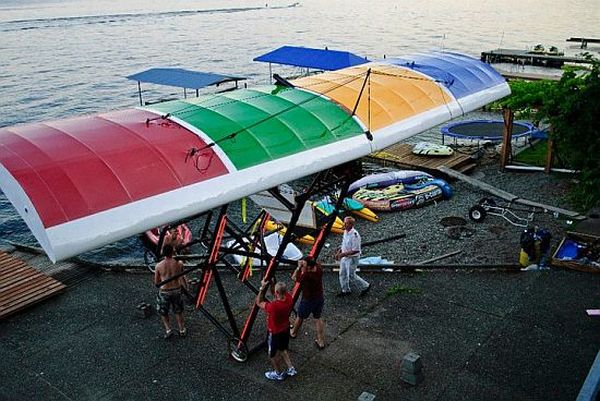
Don’t be fooled by the vibrancy of those rainbow colors, as this conception named as the Windows Project Phoenix glider (from Microsoft) has a capacity to carry 450 pounds (204kg) of payload. All set to cross the 207 ft mark (previous record set at Flugtag competition), this $1000 aircraft was fascinatingly constructed from recycled plastic soda bottles, with the wings composed from old windsurf masts wrapped in carbon fiber.
The 85-foot-wingspan craft:
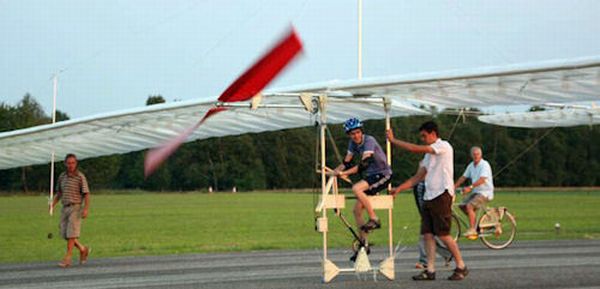
Originality, genuineness and ingeniousness govern the intrinsic character of our next entry. Conceived by one 19 year old Jesse Van Kuijk, this 85ft wingspan, 56kg craft was designed to run on pedal power. Composed from balsa wood, rip-resistant foil and plastic wrap, the contraption spurted to a distance of 35 ft (with a height of 5 ft) at its first attempt, before the bicycle chains came apart. Still kudos to the young designer for his heartfelt effort, and we hope to see some more conceptions from him in the future.
The Light Eagle:
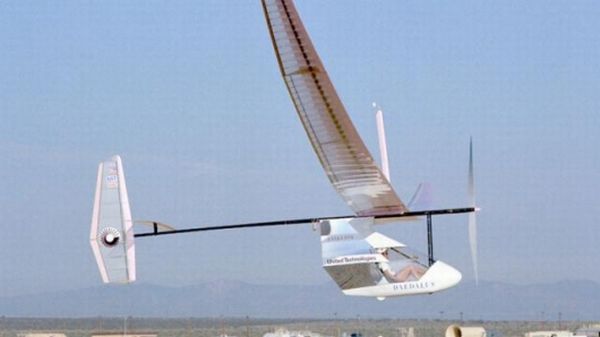
When talking about aircrafts, who can count NASA out? As a part of their Daedalus project, the Light Eagle aircraft took its maiden flight back in 1987 over Rogers Dry Lake at the NASA Dryden Flight Research Centre in California. The contraption successfully managed to set the record for three categories – the straight distance, the distance around a closed circuit, and the duration world record for the female division in human powered vehicles.
First Chinese Man-powered Airplane:
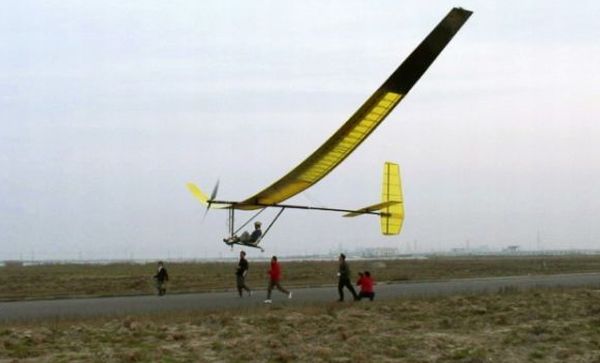
Having impressed all with their economy and automotive industry, now Chinese are venturing into the field of human powered aircrafts. Mao Yiquing, the owner of the famous F3A model factory has contrived his own 103.6 lbs (47kg) aircraft with a wingspan of 89.9 ft. The test voyage took the plane to a distance of 413.8 feet at 8.53 feet off the ground, in around 19 seconds of flight time.
Vélair 89:
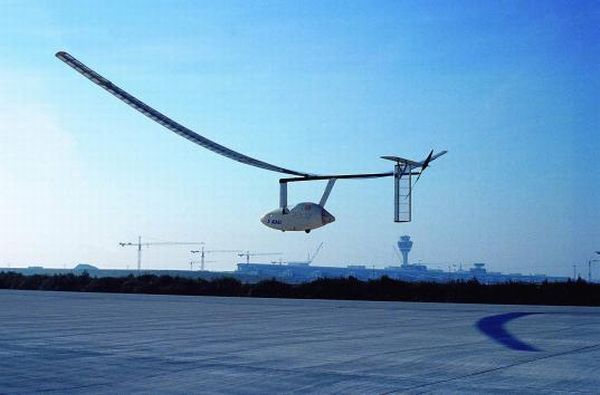
Vélair 89 was created back in 1989 as an answer to those cumbersome HPAs that preceded it. Contrived as a compact aircraft with a small pilot pod, the contraption could set itself a comparatively high speed. The total power required was 225 W for a 60 kg pilot, while its maximum horizontal speed was 22 KEAS (41 km/h).
Gamera:
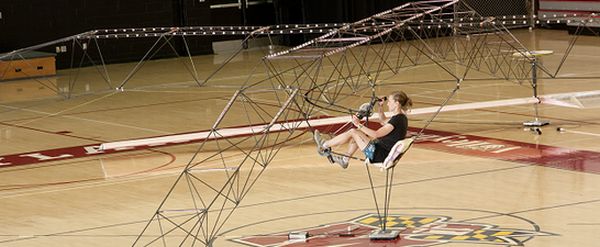
This time it’s a human powered helicopter designed by a team of students from A. James Clark School of Engineering. Christened as the Gamera, this contraption was conceived to break the world record with a human powered helicopter, maneuvered by a female. With a X shaped frame (60 feet long) with rotors (42 feet in diameter) at each end, the whole craft was constructed from a composite of balsa, foam, mylar, carbon fiber and “other lightweight materials.”
Light Energy III:
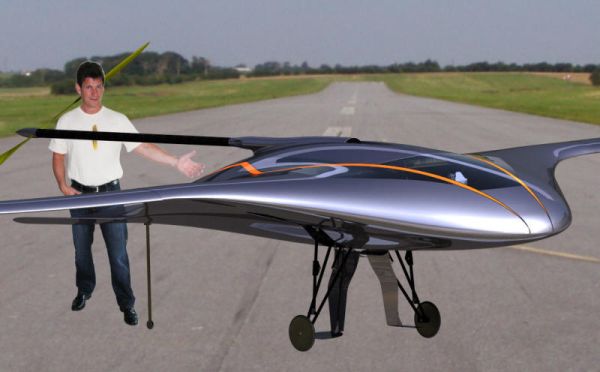
Designed by one Dann Aamann, specifically for the international Marathon Kremer Competition, the Light Energy III has an area of 14 sq m, with 14 m of wingspan and a light weight of only 22kg. The design was preceded by two earlier versions of the ‘Light Energy’, and the third iteration is supposedly the most advanced. According to the creator:
To actually fly an aircraft, at a cruise speed of 45 km/h, for approximately 1 hour on power generated only by a human call for the best in human technologies.
Pedal-powered airship:
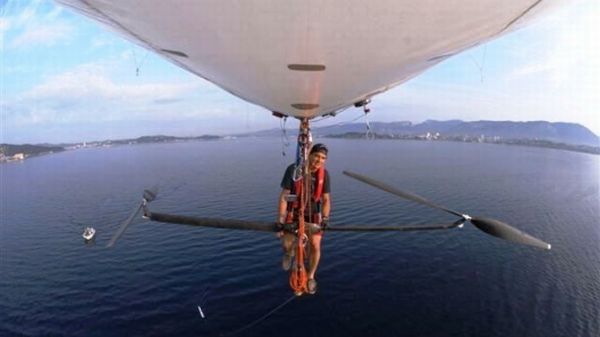
Many of us movie buffs still reminisce over those ‘flying bicycles’ scene shown in the film E.T. Now, Frenchman Stephane Rousson almost made that a reality when he attempted to cross the English Channel with his pedal-powered airship, dubbed as the Zeppy (in allusion to Zeppelins). The specs say, this adroit conception is 16-meters-long with a 5-meter diameter, and a maximum speed of 20 kph. As a matter of fact, it is the first pedal-powered airship of its kind, complete with advanced streamlined features.
Sky Runner:

No, not in any way related to the RoadRunner, this 40kg pedal powered conception was actually developed by the Korean Air Force Academy. With its wingspan of a 30m, the propeller aircraft managed to fly for 150m during its testing. But the designers still hope to make a better version of this existing prototype in the future.


